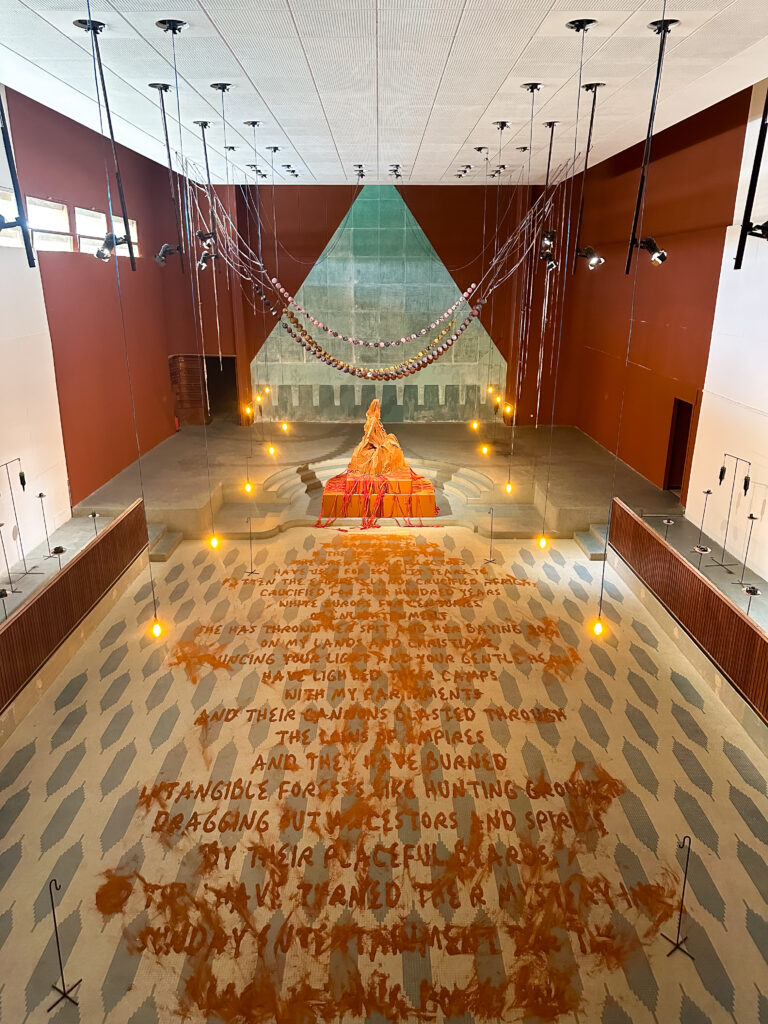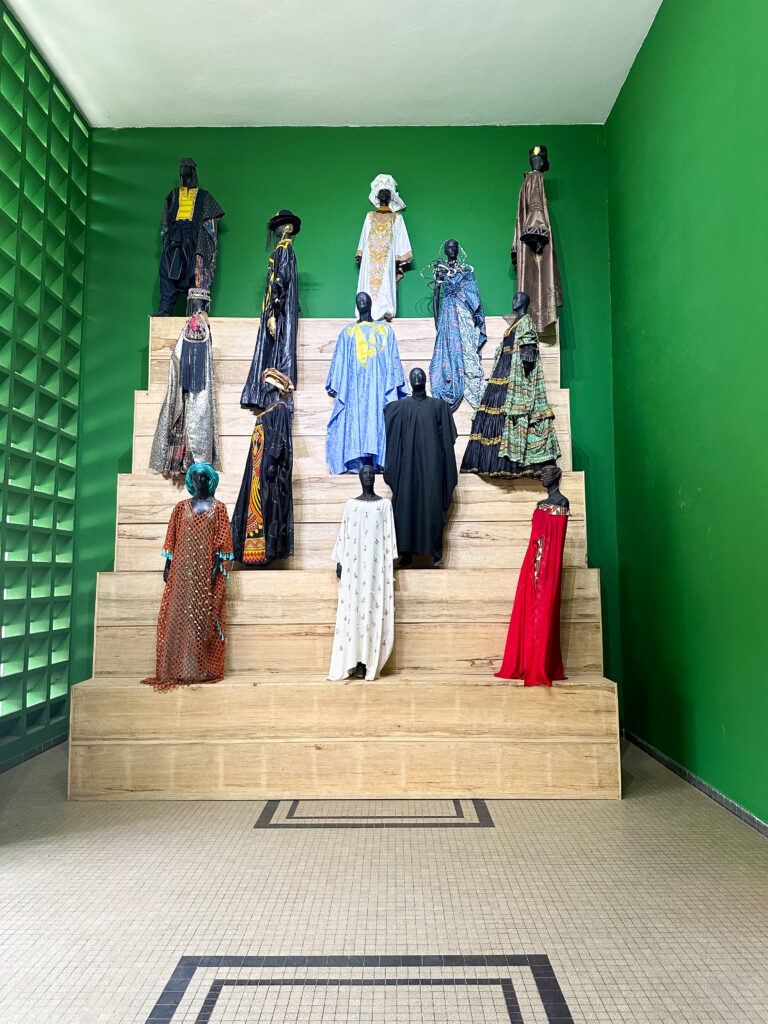
Dakar wakes early, the air warm and thick with the rhythm of its people, its streets alive with the thrum of conversation and possibility. This city, a cultural crossroads where past and future meet, has always known how to tell its story. And this November, as the 15th Dakar Biennale unfolded, it spoke louder than ever—its voice carried on brushstrokes, in swathes of fabric, and in the boldness of youth claiming their place in the narrative of African art.
Under the banner of “The Wake: Awakening, Xàll wi,” the Biennale was not a mere showcase but a reckoning. The works displayed were confrontational and tender, their beauty tinged with urgency. They demanded attention not for Africa’s art as decoration, but as declaration—a response to history and an assertion of presence.
Madame Marième Ba, speaking with the quiet intensity of one who understands the weight of her words, remarked, “The Dakar Biennale must be nourished by a demand for quality at all segments of the organization.” Her statement felt less like an observation and more like a challenge—a call to hold Africa’s art to the same high standards the world so readily applies elsewhere. Dakar, after all, does not ask for permission to lead; it simply does.
A Fusion of Tradition and Innovation: Design and Fashion Take the Stage

This year, the Biennale expanded its horizons by embracing design and fashion as integral parts of its artistic expression. No longer relegated to the periphery, these forms now stand shoulder to shoulder with painting, sculpture, and performance art, offering a vivid tapestry of African creativity.
Designers reimagined African textiles and silhouettes, crafting works that were at once deeply rooted in heritage and boldly innovative. Fashion and design became conduits for storytelling, their threads weaving narratives of identity, resilience, and possibility. This bold integration reflects the Biennale’s forward-thinking ethos—one where tradition and modernity coexist in a dynamic dance.
A Global Platform for African Creativity
For decades, Dakar has been a beacon of cultural excellence, but this year’s Biennale affirmed its status as a global epicenter of art and culture. With over 250,000 attendees, including art professionals and enthusiasts from 85 countries, the event showcased the continent’s creative brilliance on a world stage.
This is not just a festival; it is a declaration. It asserts that Africa is not only part of the global cultural conversation but also shaping its very core. Dakar’s Biennale has shown that African art is not a quiet observer of the world—it is a loud, vital participant and leader.
Empowering the Next Generation

At the heart of this year’s Biennale were the young voices redefining the future of African art. Through workshops, mentorships, and exhibitions, young artists stepped boldly into the spotlight, presenting works that challenged norms and envisioned a new narrative for the continent’s creativity.
This deliberate inclusion of youth is not just a gesture; it is a commitment to Africa’s future. These young creators bring daring ideas and fresh energy, proving that the next chapter of African art will be as transformative as its present.
The IN and OFF Programs: A City Transformed
With the IN program hosting over 2,500 artists across 16 major exhibitions and the OFF program transforming Dakar into a living gallery with 450 exhibitions, the Biennale blurred the boundaries between art spaces and daily life. The city became a vibrant stage where art flowed into streets, homes, and everyday moments, inviting everyone to participate.
This inclusive approach ensured that art wasn’t confined to galleries or reserved for elites—it was for everyone. Dakar, for a time, became a city where the creative pulse could be felt in every corner.
Amplifying Voices: The Role of Media
With more than 1,200 journalists covering the Biennale, its impact reverberated far beyond Senegal’s borders. From international headlines to social media buzz, the Biennale’s message of African creativity and resilience reached audiences around the globe, further cementing its role as a cultural powerhouse.
The Artists Speak
As Salimata Diop, artistic director of the 15th edition, so eloquently said: “The work of each artist resonates with the pulse of our time, offering reflections on social, political, and environmental issues that transcend geographical borders. Their creations embody a dialogue between cultures, a convergence of narratives that form a tapestry of shared human experiences.”
This is the true spirit of the Biennale—where every brushstroke, every installation, every note of music becomes a conversation between the artist and the world. It is art as a force for change, a medium for dialogue, and a beacon of hope.
A Closing Awakening

As the Biennale draws to a close, the resonance of “The Wake: Awakening, Xàll wi” remains palpable. It has been a call to see, to reflect, and to act. Dakar has reaffirmed its place not just as the center of African art but as the beating heart of a global cultural revolution.
The future of African art is here, bold and unyielding, ready to shape the world. And as Dakar bids farewell to the 15th Biennale, one thing is clear: this is only the beginning.
Key Words: Dakar Biennale 2024, African art, Contemporary art in Africa The Wake Awakening, Xàll wi Art and culture in Dakar, African creativity, African design and fashion Emerging, African artists, Senegal art exhibitions, Global cultural conversations





